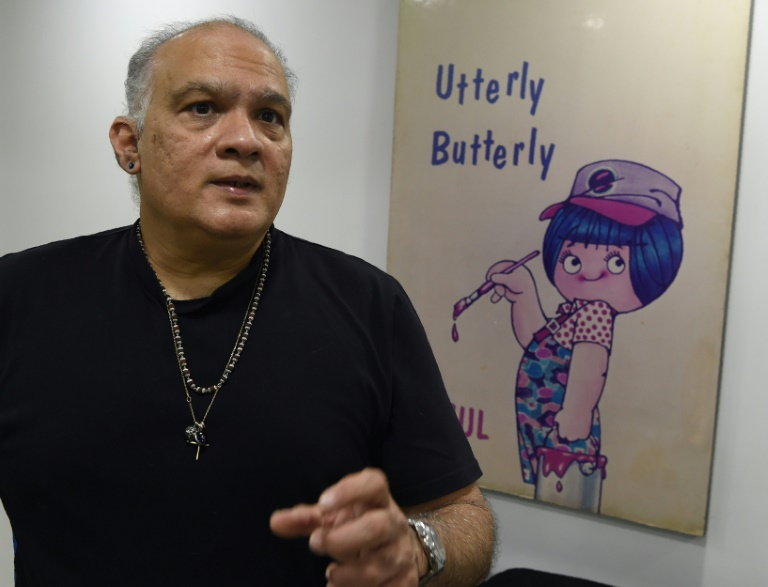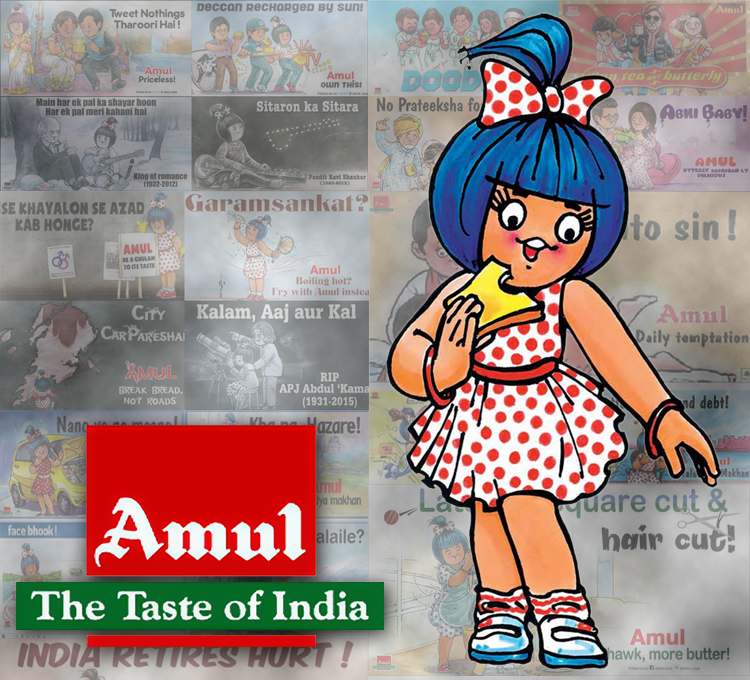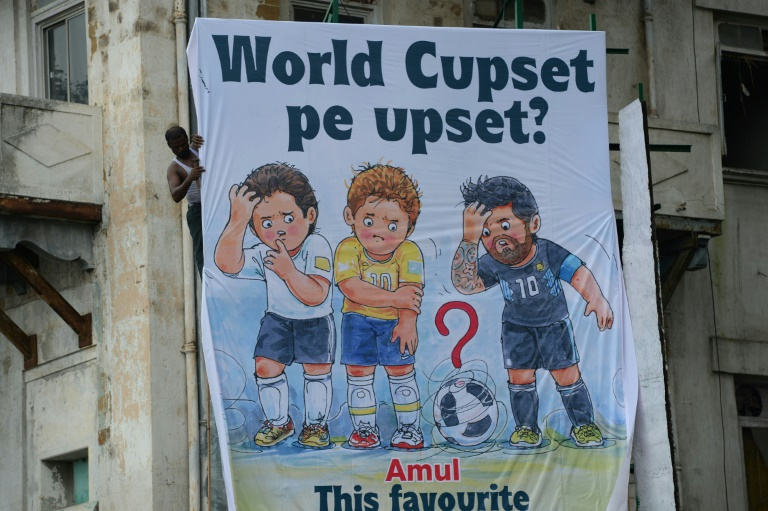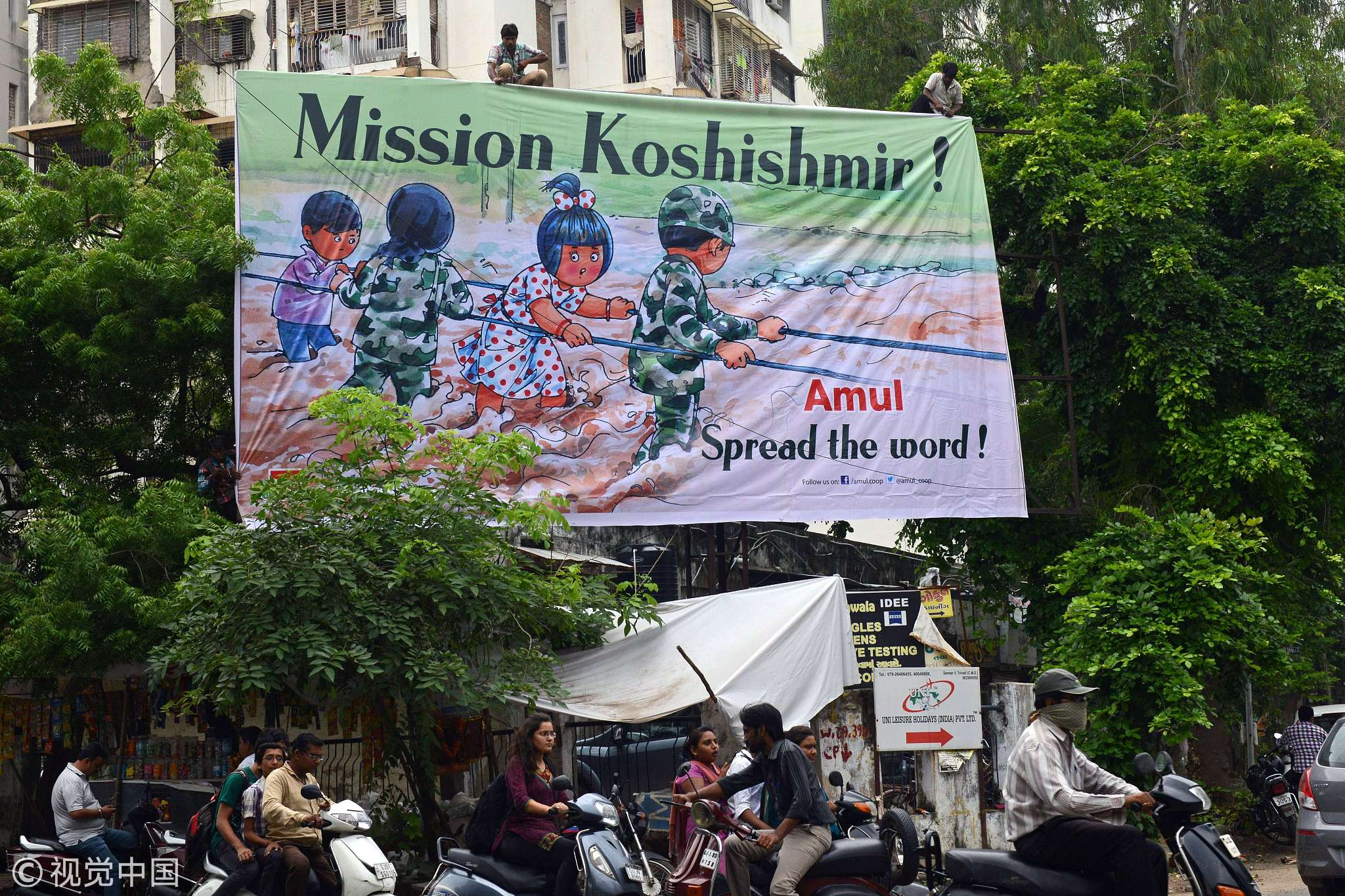
Culture
16:48, 03-Jul-2018
That's butter! The Indian ads punning for half a century
Updated
16:12, 06-Jul-2018
CGTN

Cartoons featuring everything from a pink and round-faced Donald Trump to cricket and Bollywood have been delighting Indians for half a century with pun-filled takes on the world's biggest news stories.
The adverts for Amul dairy products, which often star the brand's mascot – a blue-haired girl in a polka dot dress – have been humorously reflecting social, political and cultural life as India has evolved through the decades.
"Singapower Treaty? Amul – Leaders love it!" read one after Trump's historic summit with DPRK leader Kim Jong Un in Singapore, showing a young, rosy-cheeked Trump handing a slice of bread slathered in butter to an equally impish-looking Kim.
"We cover a variety of topics. But essentially it is always an issue that India is talking about," says Rahul daCunha, the creative head of the campaign, at his Mumbai office.
The colorful ads, which play on English and Hindi words, have been running for 52 years on billboards, newspapers and now most regularly on social media, striking a chord with educated, mainly urban Indians.

Rahul daCunha took over the Amul campaign from his father in the early 1990s. /AFP Photo
Rahul daCunha took over the Amul campaign from his father in the early 1990s. /AFP Photo
Almost every topic is cheekily covered: from political controversies to corruption scandals, sporting triumphs and failures, movie blockbusters and the lives of celebrities.
Deaths are dealt with more solemnly, in black and white.
"To have a campaign that has become part of the social consciousness is phenomenal," says marketing expert Deepali Naair.
"They evoke emotions. Sometimes they put a smile on my face, sometimes they make me frown," she adds.
The ads are the work of a three-man team working for Mumbai-based ad agency daCunha Communications. Along with daCunha himself, there's cartoonist Jayant Rane and copywriter Manish Jhaveri.
Recipe for success
More than 4,000 ads have been produced since daCunha's father, Sylvester daCunha, started the campaign in 1966. Rahul took over in the early 1990s. Initially, one ad was done a month, but in the age of Twitter, they average four or five a week.
Many of them feature the "Amul girl", as she is affectionately known in India. Her innocent expressions, round eyes, red-spotted white dress and slightly roly-poly physique disarm anyone who may take offense at what she is saying.

Amul Girl /Photo via cupofstory.com
Amul Girl /Photo via cupofstory.com
"When she says something she's always smiling about it. There's no malice and it's light-hearted," says daCunha, 55.
The Amul girl was created when it was common for companies to come up with a mascot to help illiterate Indians easily recognize their products.
She appears on the packets of some of Amul's biggest-selling items including butter and milk and is India's most recognizable mascot along with the Air India Maharajah.
The first ad, in March 1966, featured her riding a horse while holding a piece of bread.
Horse racing at the time was becoming popular in Bombay - as Mumbai was then known - and the ad read "THOROUGHBREAD" alongside brand slogan "Utterly Butterly Amul".
"In the first year the campaign was more about food, but my father quickly realized there was only so much you could say about butter," explains daCunha.
So Sylvester got permission from Amul to vary the topics. Amul also agreed that they didn't need to approve the ads before release, granting creative freedom that is rare in the advertising world.
The "topicals", as daCunha Communications calls them, started referring to news stories, including sporting events and Hollywood and Hindi-language films, and did not shy away from controversy.
Cooking up a storm

The cartoons offer pun-filled takes on the world's biggest news stories, from the World Cup to Donald Trump and Bollywood. /AFP Photo
The cartoons offer pun-filled takes on the world's biggest news stories, from the World Cup to Donald Trump and Bollywood. /AFP Photo
In 1976, one made light of the Indian government's forced sterilization procedures during emergency rule. Two years ago another celebrated surgical strike against Pakistani militants.
In March, to mark Emmanuel Macron's visit to India, the Amul girl was shown taking a selfie with the French president and his wife.
"Growing Frenchship! Amul – France loafs it!" it screamed.
The campaign hasn't always pleased everyone.
In 2015, British Airways complained after Amul joked about an incident in which the airline misplaced Indian cricket legend Sachin Tendulkar's luggage. "British Errways?" quipped the caption.
The creators tend to avoid national calamities or hugely distressing incidents.

Workers erect a public service announcement hoarding for popular Indian dairy cooperative Amul, depicting Indian soldiers and the 'Amul Girl' mascot during Kashmir flood rescue operations, in Ahmedabad on September 13, 2014. /VCG Photo
Workers erect a public service announcement hoarding for popular Indian dairy cooperative Amul, depicting Indian soldiers and the 'Amul Girl' mascot during Kashmir flood rescue operations, in Ahmedabad on September 13, 2014. /VCG Photo
However, a poignant illustration this year was well received for capturing the sense of hopelessness as India reeled in shock from two high-profile child rapes.
It showed the Amul girl sitting down, her head buried in her hands, weeping.
DaCunha believes politicians have never expressed their displeasure "because we have made fun of everybody".
But he admitted the team held back sometimes as ultimately they represent a brand.
With India's history of communal riots and a Hindu nationalist movement emboldened by the election of Prime Minister Narendra Modi four years ago, there is one subject the team dares not touch –- religion.
"It's an area where nothing you say will end up being funny. And we want you to chuckle," says daCunha.
Source(s): AFP

SITEMAP
Copyright © 2018 CGTN. Beijing ICP prepared NO.16065310-3
Copyright © 2018 CGTN. Beijing ICP prepared NO.16065310-3